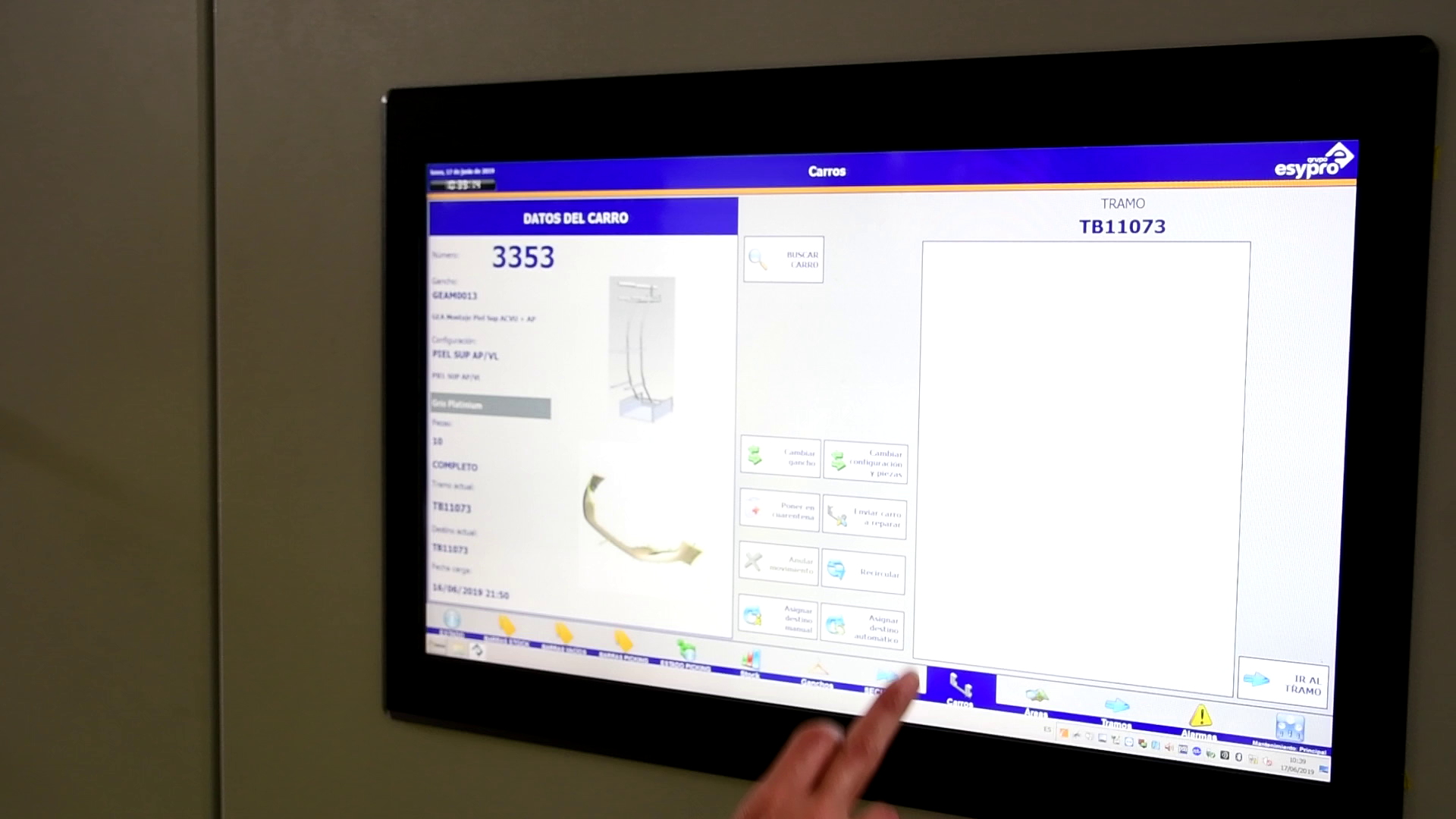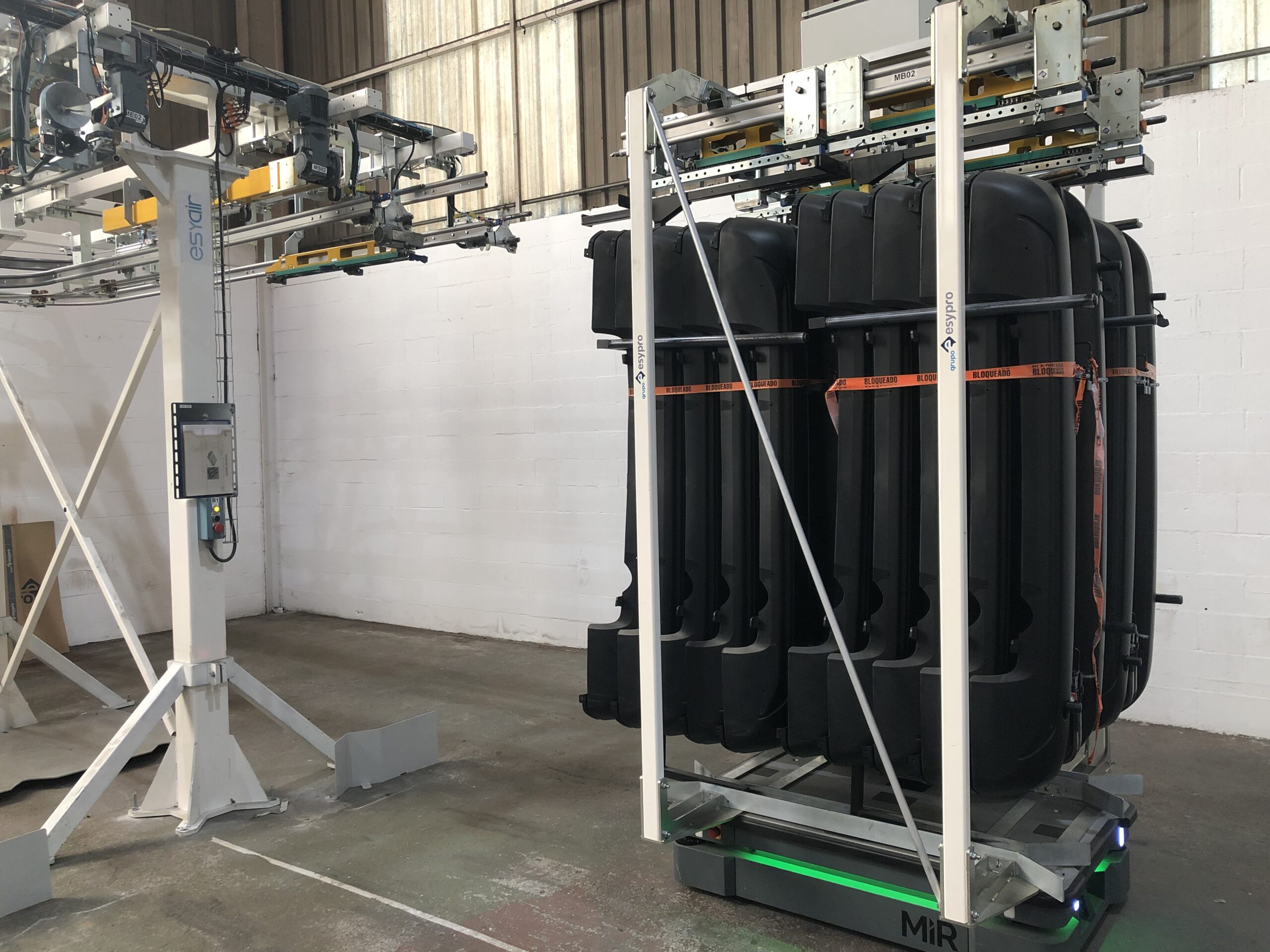In a world rapidly advancing towards digitization and innovation, industrial logistics stands at the epicenter of the revolution. The year 2024 promises to witness significant changes in the way we conceive and carry out transportation and storage processes. In this blog, we will explore the five main trends that will shape internal logistics in 2024.
1. Digitalization of all logistics processes: Smart warehousing
Digitalization has shifted from being an option to becoming an imperative need. In 2024, smart warehouses will solidify as the cornerstone of logistic efficiency, a concept that completely redefines how a warehouse is managed and operated.
The essence of this trend lies in integrating advanced technologies, from the Internet of Things (IoT) to artificial intelligence, to create a highly connected logistics environment. Smart warehouses can not only store goods but also become vital information nodes providing real-time visibility across the entire supply chain.
One of the standout advantages of digitalization is the optimization of operational efficiency. Through the implementation of sensors and tracking systems, warehouses can collect precise data on the location, quantity, and status of products in real-time. This enhanced visibility not only facilitates inventory management but also enables quicker and more accurate strategic decision-making.

The resulting agility translates into a substantial improvement in customer satisfaction, as products can be located and dispatched more quickly and precisely. Additionally, the reduction of logistical errors and minimized response times are also tangible benefits. In summary, the digitalization of all logistics processes, with a particular focus on smart warehousing development, redefines efficiency and responsiveness in the supply chain.
2. Warehouse automation and robotics
The collaboration between humans and robots redefines productivity. Drones, autonomous vehicles, and collaborative robotic arms will become indispensable allies for performing repetitive and risky tasks, allowing human workers to focus on more strategic and creative functions.

From sorting and packaging to labeling, these robots synergize with human personnel to create a more efficient and agile logistics environment.
In addition to improving efficiency and safety, warehouse robotization also impacts operating costs. While the initial investment may be significant, the reduction of errors, optimization of processing times, and increased long-term productivity result in substantial return on investment.
This shift towards automation is not just a response to the demand for efficiency but also a means to meet growing market expectations. Current customers expect fast and accurate deliveries, and warehouse robotization stands as the answer to this logistical challenge.
3. Application of the industrial metaverse in the supply chain
The metaverse, a concept that has evolved from the entertainment realm to more pragmatic applications, enters the supply chain. The creation of collaborative virtual environments will facilitate coordination among different stakeholders in the logistics chain, allowing faster and more efficient decision-making. From route planning to warehouse layout, three-dimensional visualization enables a deeper and quicker understanding of processes. This not only improves decision-making but also facilitates remote collaboration by allowing teams to work together virtually, regardless of their physical location.
Furthermore, augmented reality is used for personnel training. Workers can receive hands-on training in virtual environments simulating real-world conditions, enhancing efficiency and reducing errors in logistical task execution. In summary, the application of the industrial metaverse not only provides a new layer of interactivity but also drives operational efficiency and collaboration in the supply chain.
4. Artificial intelligence in warehouse management

Artificial intelligence has transitioned from a futuristic technology to a tangible reality in warehouse management. By analyzing large volumes of real-time data, AI optimizes operations, enhances decision-making, and enables the anticipation of potential logistical problems.
1. Process optimization and planning
AI revolutionizes logistics by calculating the most efficient routes for internal logistics, minimizing costs and times. With advanced algorithms, AI-based warehouse management systems can dynamically adjust reference routes within a warehouse in response to unexpected changes.
2. Intelligent inventory management
Inventory management becomes more precise and effective thanks to AI. By forecasting demand patterns, technology reduces inventory levels without compromising product availability. This not only improves operational efficiency but also reduces costs associated with storage.
3. Predictive maintenance
AI not only optimizes distribution but also takes care of physical assets. Through predictive maintenance, industrial warehouses can anticipate machinery and equipment failures, avoiding costly downtime and ensuring continuous operational flow.
In summary, artificial intelligence in logistics not only improves efficiency but also facilitates agile adaptation to changing market demands, positioning the supply chain for success in the era of Logistics 5.0.
5. Sustainable warehouses
Sustainability becomes one of the most important trends in internal logistics for 2024. The warehouses of the future will not only be operationally efficient but also environmentally responsible. The implementation of eco-friendly practices, waste reduction, and the use of renewable energy will be distinctive features of sustainable warehouses in the near future.

Commitment to sustainable warehouses resonates not only in environmental terms but also has positive implications for brand image and consumer preference. Current customers increasingly value responsible business practices and seek to support companies committed to sustainability.
6. Prepare for internal logistics in 2024
The speed of change in internal logistics is impressive, and those who adapt faster to these trends will be better positioned for success in 2024. Preparation involves strategic investment in emerging technologies, the development of digital skills, and the adoption of an innovative mindset. Companies that embrace these trends will not only survive but thrive in a constantly evolving logistics environment.
In conclusion, the future of industrial logistics looks exciting and challenging. Digitization, automation, the metaverse, Industry 5.0, sustainability, and anticipation will be the keys to unlocking the maximum potential of your plant next year.
Eager to propel your company in 2024? Discover how our automated systems will revolutionize your supply chain. Contact us to take the first step towards logistical innovation!
